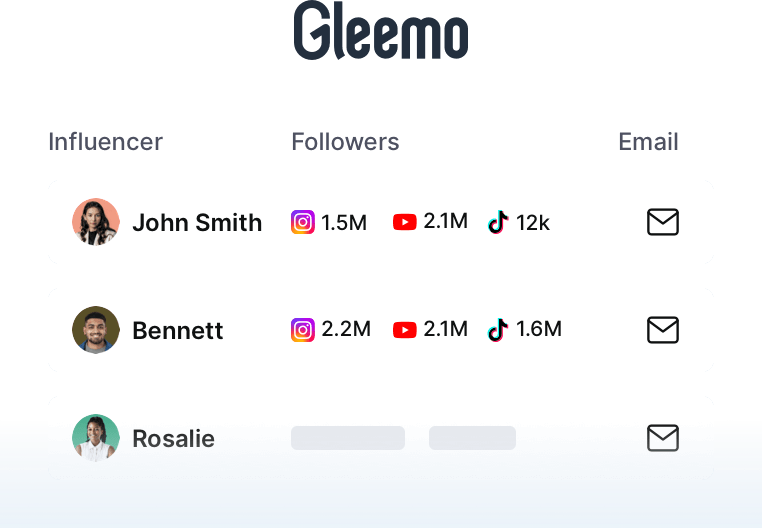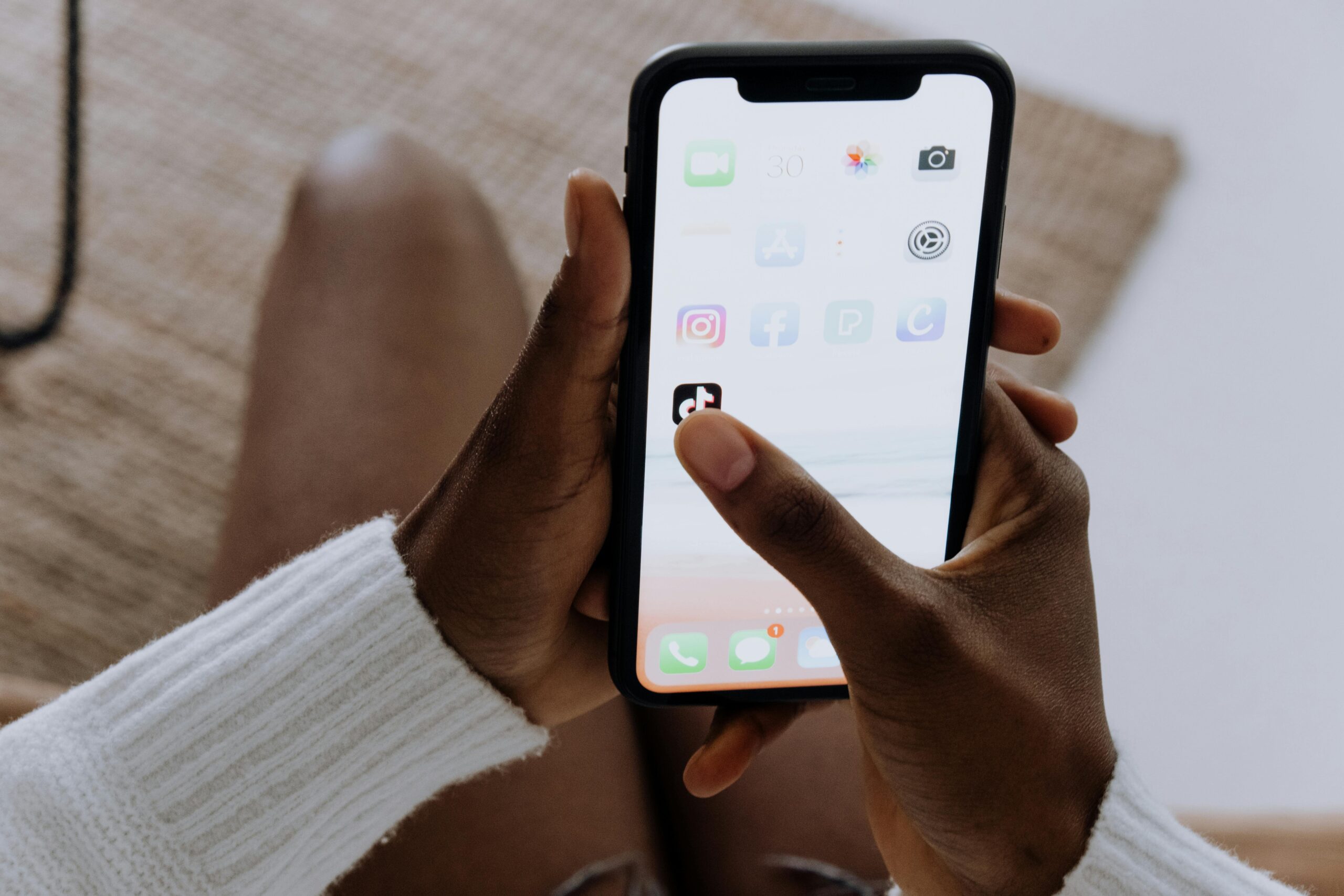Lifestyle influencers have reshaped modern marketing by blending personal storytelling with brand promotion. Their ability to connect with audiences through relatable, niche-driven content makes them indispensable for brands aiming to humanize their messaging. This guide dives deep into strategies for collaborating with lifestyle influencers, from selection to campaign measurement, while maintaining authenticity.
What Are Lifestyle Influencers

Lifestyle influencers are digital creators who document their daily lives across categories like wellness, fashion, travel, or home decor. They often operate in sub-niches (e.g., “clean beauty” or “slow travel”) and attract highly engaged audiences.
Lifestyle influencers can be categorized into different tiers based on their follower count:
- Nano influencers (1,000 – 10,000 followers): They have a highly engaged and niche audience, often focused on a specific interest or community.
- Micro–influencers (10,000 – 100,000 followers): Known for their authenticity and strong community engagement, they share relatable content that deeply resonates with their audience.
- Macro influencers (100,000 – 1 million followers): With broad reach and appeal, they have developed a recognizable personal brand that strongly connects with their followers.
- Mega influencers (over 1 million followers): These include celebrities and industry experts with significant influence and wide reach.
The Power of Lifestyle Influencers in Modern Marketing

Lifestyle influencers wield influence by embedding brands into the fabric of everyday life. Their strength lies not in celebrity status, but in their ability to mirror the aspirations, challenges, and routines of their audience. For example, lifestyle influencer Lauren Conrad’s partnership with The Little Market significantly increased the brand’s sales and highlighted the impact of using a lifestyle influencer to connect with a targeted audience.
1. Audience Accessibility
Lifestyle influencers have built substantial followings on platforms like Instagram, YouTube, and TikTok. Their content attracts diverse audiences interested in various aspects of lifestyle, from fashion and beauty to travel and food.
2. Personal Connection with Followers
These influencers have cultivated personal relationships with their audiences through consistent and authentic content. Their followers trust their recommendations, making them effective ambassadors for brands.
3. Content Variety and Flexibility
Lifestyle influencers are not confined to a single niche, allowing them to promote a wide range of products and services. This versatility makes them suitable partners for brands across multiple industries. They can create diverse content formats, including reviews, tutorials, and lifestyle integrations, to showcase products in appealing ways.
4. Cost-Effective Marketing
Collaborating with lifestyle influencers can be more cost-effective than traditional advertising methods. Brands can achieve high engagement rates and significant reach without the substantial budgets required for conventional media campaigns.
5. Credibility and Authenticity
The authentic nature of lifestyle content resonates with audiences who value genuine recommendations over overt advertising. Influencers who share honest experiences with products can enhance a brand’s credibility in the eyes of their followers.
How do you work with lifestyle influencers
1. Identifying Lifestyle Influencers Who Align with Your Brand
Finding the right lifestyle influencer is less about follower counts and more about shared values, audience alignment, and authentic storytelling. A mismatched partnership can dilute your brand’s message, while a strategic collaboration can amplify trust and conversions.
Clarify Your Brand’s Values and Target Audience
- Define brand values: Clearly articulate your brand’s core values, such as sustainability, luxury, affordability, innovation, etc. For example, if your brand emphasizes sustainability, look for influencers who advocate for eco-friendly lifestyles and environmental protection.
- Identify target audience: Understand the demographics, interests, and consumption habits of your target audience, including age, gender, location, hobbies, etc. This helps narrow down influencers whose audience matches your target demographic. For instance, if your brand focuses on skincare products for young women, prioritize influencers whose followers are primarily young women interested in beauty and skincare.
Research Influencers
- Leverage search tools: Use social media platforms’ search functions and hashtags to find relevant lifestyle influencers. For example, search keywords like “lifestyle influencer” or specific niche terms (e.g., “travel lifestyle influencer”) on Instagram, TikTok, and YouTube. You can also use location-based hashtags (e.g., “#NYC lifestylist”) to find local influencers.
- Use influencer marketing platforms: Platforms like Gleemo offer extensive databases of influencers and influencer search tools to help brands quickly identify influencers who align with their values and target audience. These platforms also provide analytics to evaluate influencers’ performance and engagement metrics.
- Competitor analysis: Research your competitors’ influencer campaigns to identify which influencers they collaborate with and how these influencers resonate with their audience. This can provide valuable insights and help you avoid competitors’ mistakes.
Evaluate Influencers’ Influence and Authenticity
- Audience size and engagement metrics: While follower count is important, engagement metrics (likes, comments, shares, saves, response rates, etc.) are even more critical. High engagement indicates that the influencer’s content resonates with their audience and that the audience is active and loyal. For example, micro-influencers may have smaller follower counts but higher engagement rates.
- Content quality and consistency: Review the influencer’s content quality, including image and video quality, creativity, and originality. Consistent posting frequency and thematic coherence demonstrate the influencer’s professionalism and dedication to their audience. Additionally, assess whether their content aligns with your brand’s visual and tonal style.
- Audience demographics: Use social media analytics tools or influencer marketing platforms to analyze the demographics of the influencer’s audience (age, gender, location, interests, etc.) to ensure they match your target audience.
2. Crafting Authentic Campaigns with Lifestyle Influencers
Authenticity hinges on balancing brand objectives with creative freedom. Follow these guidelines:
Strategy 1: Focus on Value-Driven Content
Highlight how your product solves a problem or enhances daily life. A meal kit brand could task influencers with creating “busy weeknight dinner” tutorials, emphasizing convenience and nutrition.
Strategy 2: Align with Platform Strengths
- Instagram Reels: Ideal for quick tutorials or behind-the-scenes clips.
- YouTube: Use long-form videos for in-depth reviews or storytelling.
- TikTok: Leverage trends to showcase products in playful, viral formats.
Strategy 3: Encourage Organic Integration
Avoid scripted endorsements. Instead, let influencers feature your product in existing content formats. For example, a coffee brand might appear in a “work-from-home productivity” video, positioned as a staple in the creator’s routine.
3. Leveraging Storytelling to Create Emotional Connections
Storytelling transforms products into memorable narratives. Effective techniques include:
Relatable Journeys

Encourage influencers to document their genuine experiences with your product. A fitness app brand might partner with a wellness creator to share a 30-day “strength-building journey,” highlighting both progress and setbacks.
Aspirational Narratives

Luxury lifestyle influencers excel at framing products as symbols of achievement. For example, a watch brand could be showcased as a reward for career milestones in a creator’s “5-year reflection” vlog.
Community-Centric Stories

Position your product as a tool for connection. A book subscription service might collaborate with a literature influencer to host virtual reading clubs, tying the brand to shared intellectual experiences.
4. Promoting Everyday Brand Integration Through Influencers
Lifestyle influencers can effectively promote everyday brand integration. For example, GoPro provides influencers with cameras to capture adventures like skydiving, surfing, and mountain biking. The thrilling content showcases the product’s durability and quality in natural settings, resonating with audiences that love adventure and excitement.
Another example is HelloFresh partnering with lifestyle vloggers focusing on healthy living, cooking and family life. By demonstrating how HelloFresh fits into a busy lifestyle while promoting health and convenience, the brand connects with viewers seeking practical meal planning solutions.
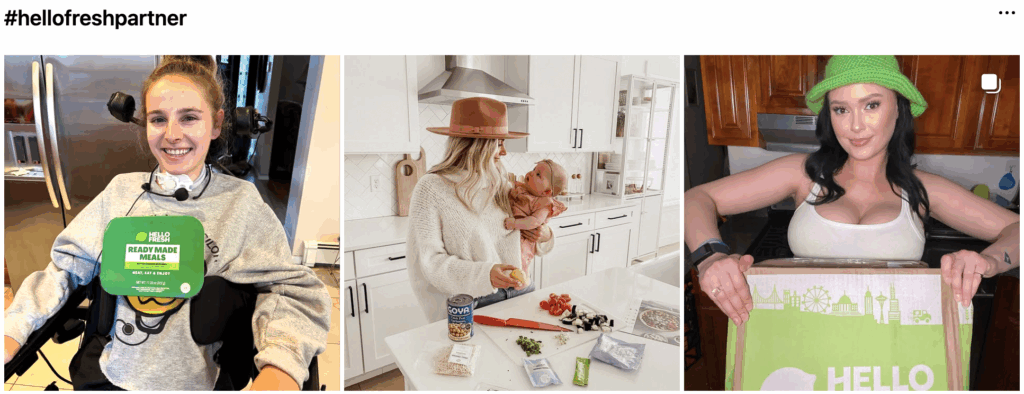
Fitness influencer Kayla Itsines shares workout routines and meal plans, integrating products and brands into her daily life. A beauty influencer might encourage followers to post makeup looks using a specific cosmetics brand’s products with a dedicated hashtag.
By incorporating products into daily routines and creating consistent narratives across multiple platforms, lifestyle influencers make brands appear more natural and indispensable in the audience’s daily lives. These subtle integrations make products feel like a natural part of the audience’s life.
5. Measuring Authentic Engagement and Impact
To comprehensively evaluate the success of influencer collaborations, it’s essential to track multiple key metrics that provide insights into audience interaction, content performance, and business outcomes.
- Audience Engagement: Measures how actively the audience interacts with the influencer’s content. High engagement indicates the content resonates with the audience and drives interactions like likes, comments, shares, and saves.
- Content Reach: Reflects how widely the content has spread across platforms, indicating the campaign’s ability to attract attention beyond the influencer’s existing follower base.
- Audience Retention: Assesses how long viewers engage with video or interactive content, highlighting the content’s appeal and relevance.
- Brand Collaboration Fit: Evaluates how naturally the brand integrates into the influencer’s content and how well the audience accepts this integration.
- Audience Growth Rate: Quantifies the increase in the brand’s social media followers due to influencer collaborations, signaling sustained interest and brand awareness.
- Return on Investment (ROI): Reveals whether the influencer partnership is generating profits by comparing campaign revenue to total expenses.
| Key Metric | Measurement Methods or Tools |
| Audience Engagement | Social media platform analytics, Google Analytics, Gleemo |
| Content Reach | Social media platform analytics, Brandwatch, Gleemo |
| Audience Retention | Video platform analytics (e.g., YouTube Analytics) |
| Brand Collaboration Fit | Audience surveys |
| Audience Growth Rate | Social media platform analytics, Gleemo |
| Return on Investment (ROI) | Financial records, Sales data |
Gleemo is a powerful tool for tracking and analyzing these metrics. It offers detailed influencer analytics and reporting features, enabling brands to monitor audience engagement, content reach, audience retention, and brand collaboration fit efficiently. By leveraging Gleemo’s capabilities, brands can gain deep insights into their influencer marketing campaigns and make data-driven decisions to optimize their strategies.
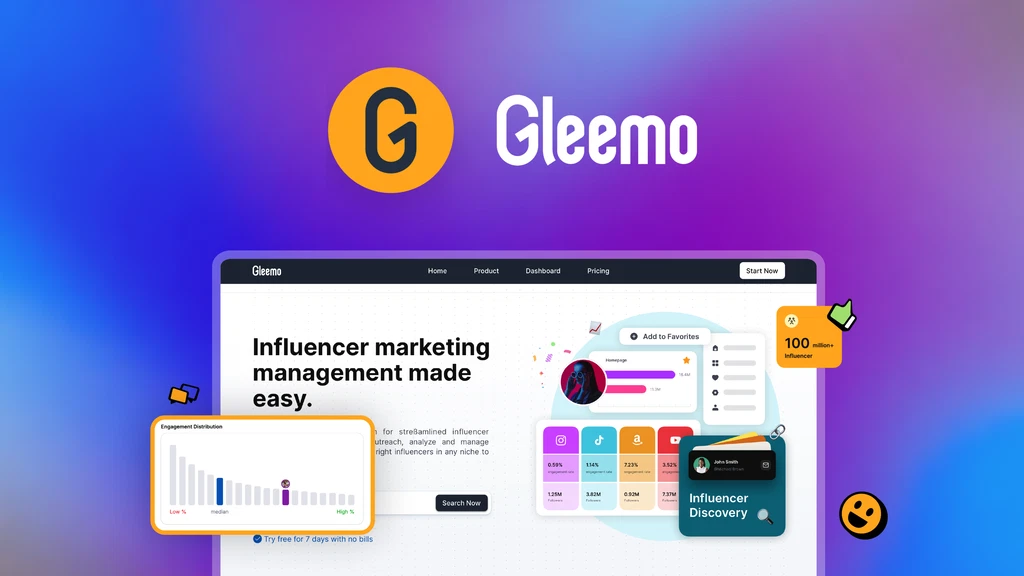
6. Building Long-Term Relationships with Lifestyle Influencers
Long-term relationships with influencers can lead to more authentic and effective campaigns over time.
- Exclusive Partnerships: Offer annual contracts with tiered incentives (e.g., bonuses for hitting engagement targets).
- Co-Creation Opportunities: Develop limited-edition products or content series with influencer input.
- Feedback Loops: Regularly review performance data together to refine strategies.
Skincare brand Glossier, for instance, built a loyal community by nurturing long-term collaborations with Lifestyle influencers who authentically loved their products.
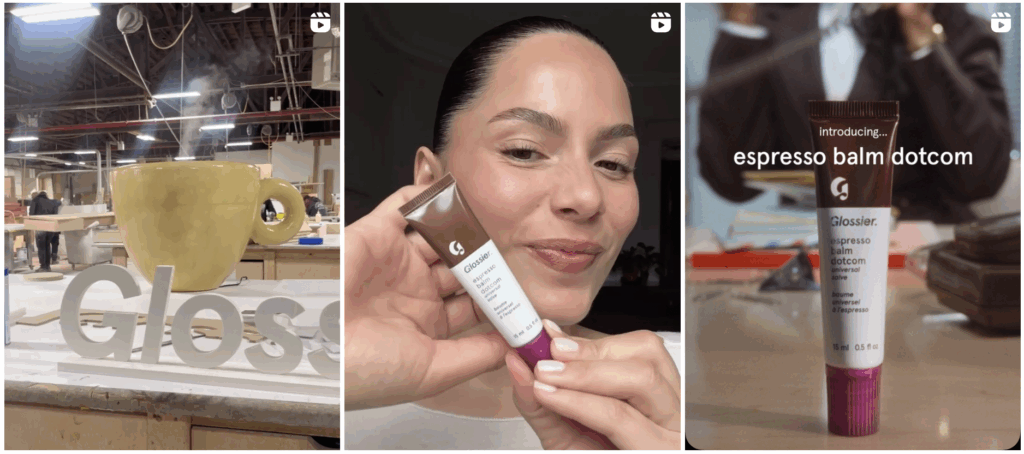
7. voiding Over-Commercialization in Lifestyle Influencer Campaigns
To prevent your campaigns from feeling overly commercial, keep these points in mind:
- Balance promotion with authenticity: Ensure that the content still feels genuine to the influencer’s audience.
- Focus on value: Highlight how your product adds value to the influencer’s life and their followers’ lives.
- Subtle branding: Integrate your brand message in a way that doesn’t overshadow the influencer’s voice.
Conclusion & Key Takeaways
Lifestyle influencers offer brands a unique opportunity to connect with audiences on a deeper, more personal level. By understanding the power of these influencers, identifying the right fit for your brand, crafting authentic campaigns, and building long-term relationships, you can elevate your brand’s presence in the digital landscape. Remember that the key lies in maintaining authenticity and avoiding over-commercialization to foster genuine connections with your target audience.
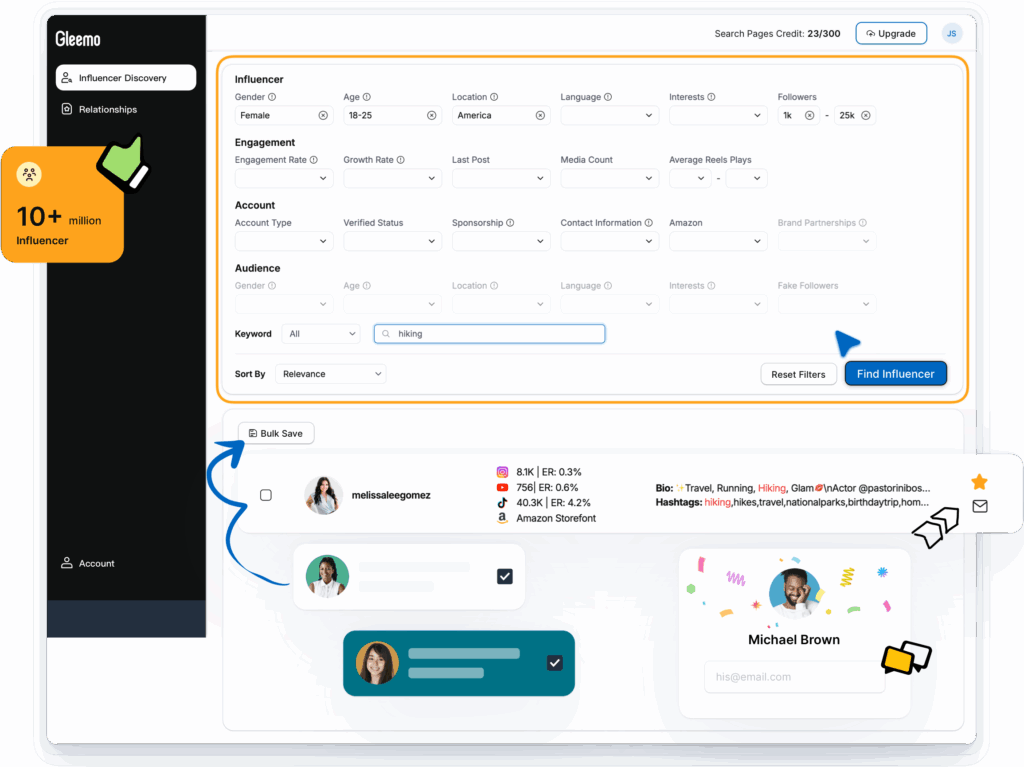
Use platforms like Gleemo to discover millions of influencers across Instagram, YouTube, TikTok, and Amazon. Search with keywords to find the right influencers for your brand now!
FAQs
How do you become a lifestyle influencer?
Define a niche, create high-quality content consistently, engage authentically with followers, and collaborate with brands that match your values.
Who are the top non-celebrity Instagram lifestyle influencers?
Examples include @muradosmann (travel storytelling), @thehomeedit (organization tips), and @nutritionbykylie (evidence-based wellness).
What distinguishes luxury lifestyle influencers?
They focus on high-end products, exclusive experiences, and polished aesthetics, targeting affluent audiences.
How do wellness influencers differ from general lifestyle creators?
They specialize in holistic health, often partnering with brands in fitness, mental wellness, or organic nutrition.
